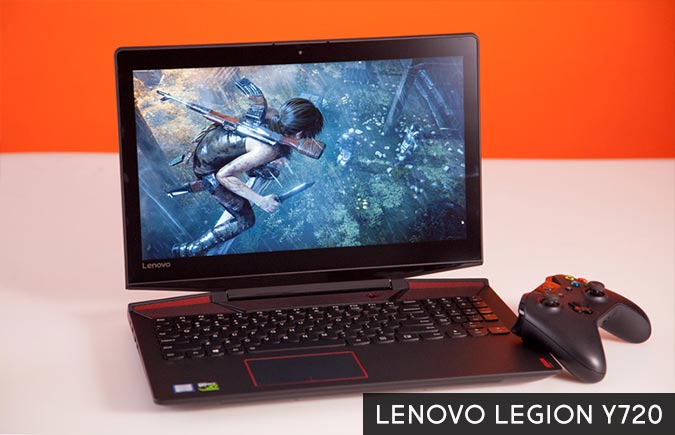Lenovo Gaming Laptops – 2018 Brand Rating and Report Card
Despite making some key improvements over the past year, Lenovo remains near the bottom of the pack for gaming. The powerful and premium Legion Y920 is one of the best gaming laptops we've reviewed in quite a while, but when you look at Lenovo's lineup as a whole, you see that the company failed to deliver much in the way of variety or innovation.
Fortunately, with a fully revamped Legion series for 2018, we expect Lenovo to become a greater force in the gaming space soon.
Reviews (29/40)
The only gaming laptops we saw from Lenovo were the Legion Y720 (3 stars), the Legion Y920 (4 stars, Editors' Choice) and the Legion Y530 (3.5 stars). That gave it an average score of 3.5.
We praised the 17-inch Y920 for its great performance, slick design, comfy keyboard and excellent Nvidia G-Sync screen (though we lamented its below-average battery life). While the 15.6-inch Y720 had better battery life and great speakers, the display left a lot to be desired, and it had mixed productivity performance.
Design (14/20)
Lenovo's gaming laptops can go from elegant to cute in a "mid-2000s goth kid kind of way." The Legion Y920 serves up a black aluminum chassis with a soft cross-hatch with a bright-red "Y" in the center that we described as a "reverse Louboutin."
Sign up to receive The Snapshot, a free special dispatch from Laptop Mag, in your inbox.
We were also fond of the raised rubberized palm rest and mechanical keyboard that looked and felt great. And then there's the Y720 and its polarizing checkerboard design on its aluminum lid. While some us thought it was cute, others felt it was downright ugly.
Display (9/15)
Lenovo nailed it with the Legion Y920’s lovely 17.3-inch, 1920 x 1080 G-Sync panel, which is incredibly immersive. It covered a solid 119 percent of the sRGB color gamut and hit an impressive 362 nits of brightness.
However, we were disappointed by the 15.6-inch Legion Y720, as its 1080p panel is especially dull, producing just 73 percent of the sRGB gamut and hitting a measly 210 nits of brightness.
Innovation (6/10)
The latest Lenovo Legion Y920 is one of the best gaming laptops we've reviewed all year, but it doesn't offer anything particularly innovative,save for its newly customizable RGB keyboard and built-in Xbox Wireless Controller support.
MORE: Best Lenovo Laptops
However, it's worth noting that Lenovo just rebooted its entire Legion line for summer 2018, completely ditching the generic red-and-black for slimmer, more subdued designs.
Software (7/10)
The Nerve Sense app, found in the Legion Y720 and Legion Y920, is Lenovo's home for its utility functions. There, you can customize key-lighting — by zones, not individual keys — and you can adjust CPU, GPU and clock speed.
On Nerve Sense, you'll also manage your system's fans and prioritize which programs get network bandwidth priority. These Legion laptops also include Nvidia GeForce Experience, which offers a suite of apps designed to enhance your experience, including by extending battery life. Lenovo continues its tradition of including just a little bit of software, all of which is useful.
Configurations and Warranty (2/5)
Lenovo’s selection is quite thin at the moment, as the company is transitioning from its Y520 and Y720 series to newer Y530 and Y730 machines at 15- and 17-inch sizes. In other words, newer, faster machines are definitely on the way. But in the meantime, there’s the 17-inch Y720, with its GTX 1060 GPU and Core i7 processor starting at $1,029, and the 17-inch Y920, which begins at $2099, adds in a G-Sync display and bumps the graphics power up to a GTX 1070.
Those are quite slim pickings. And while you can still find the Y920 on Amazon, Lenovo has stopped selling that machine through its own store. Hardcore gamers willing to shell out top dollar for a GTX 1080-equipped system don’t have much of a reason to consider Lenovo right now.
MORE: The Best Gaming Laptops
That’s a shame, because the company’s warranty is solid. Lenovo allows you to swap out certain components, like RAM and storage, without voiding the standard one-year warranty. Additionally, owners can pay to extend the warranty by another year or two — a good option for those who’d like a little more peace of mind.







